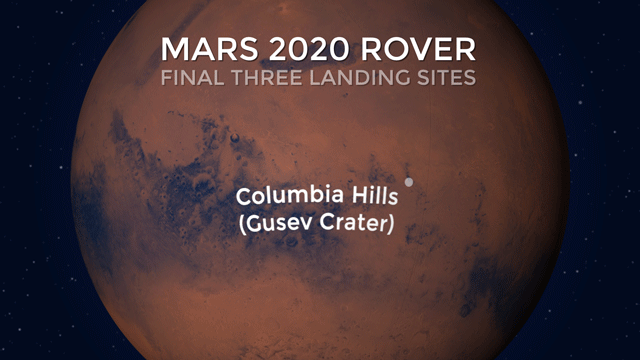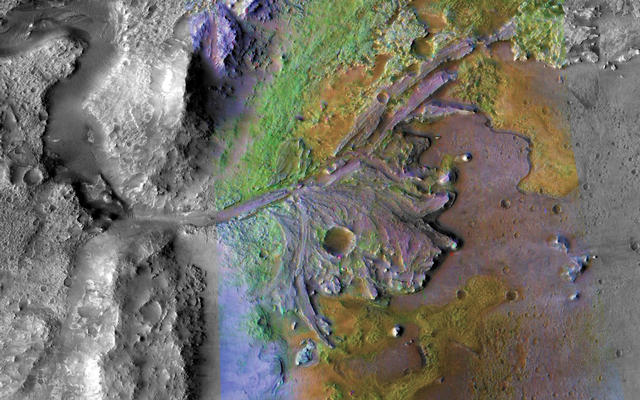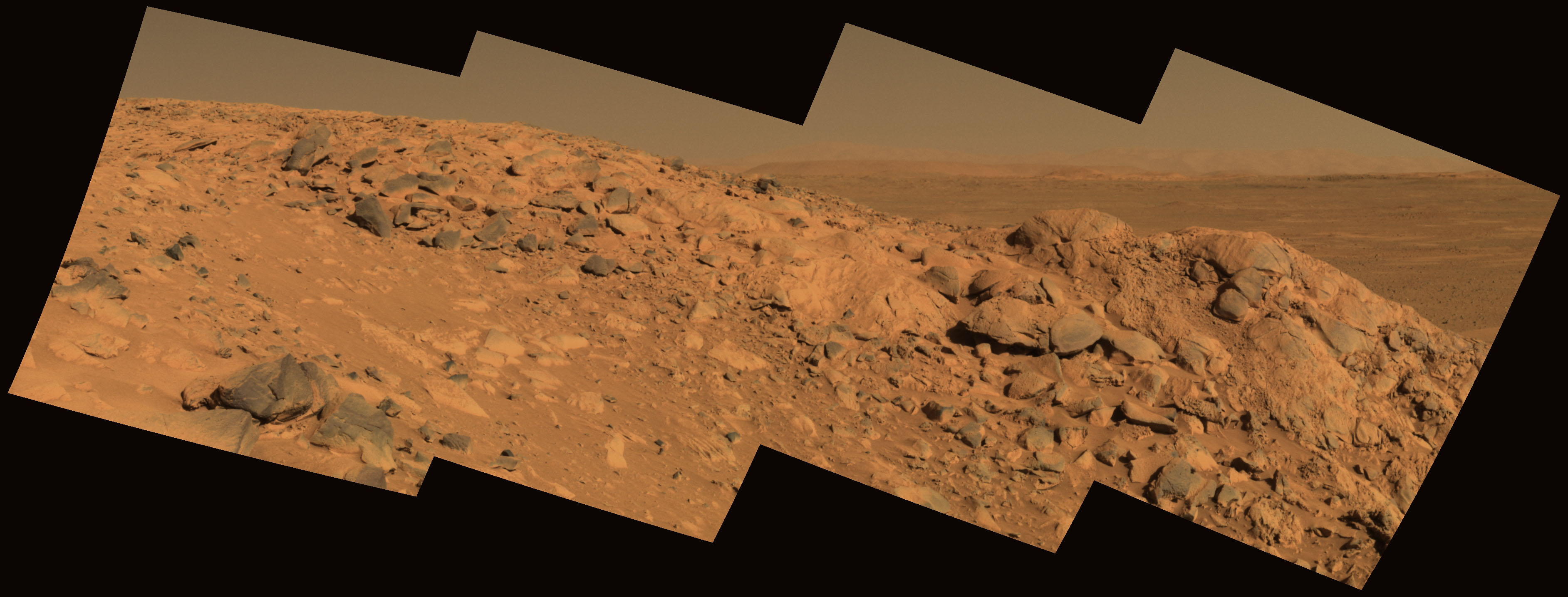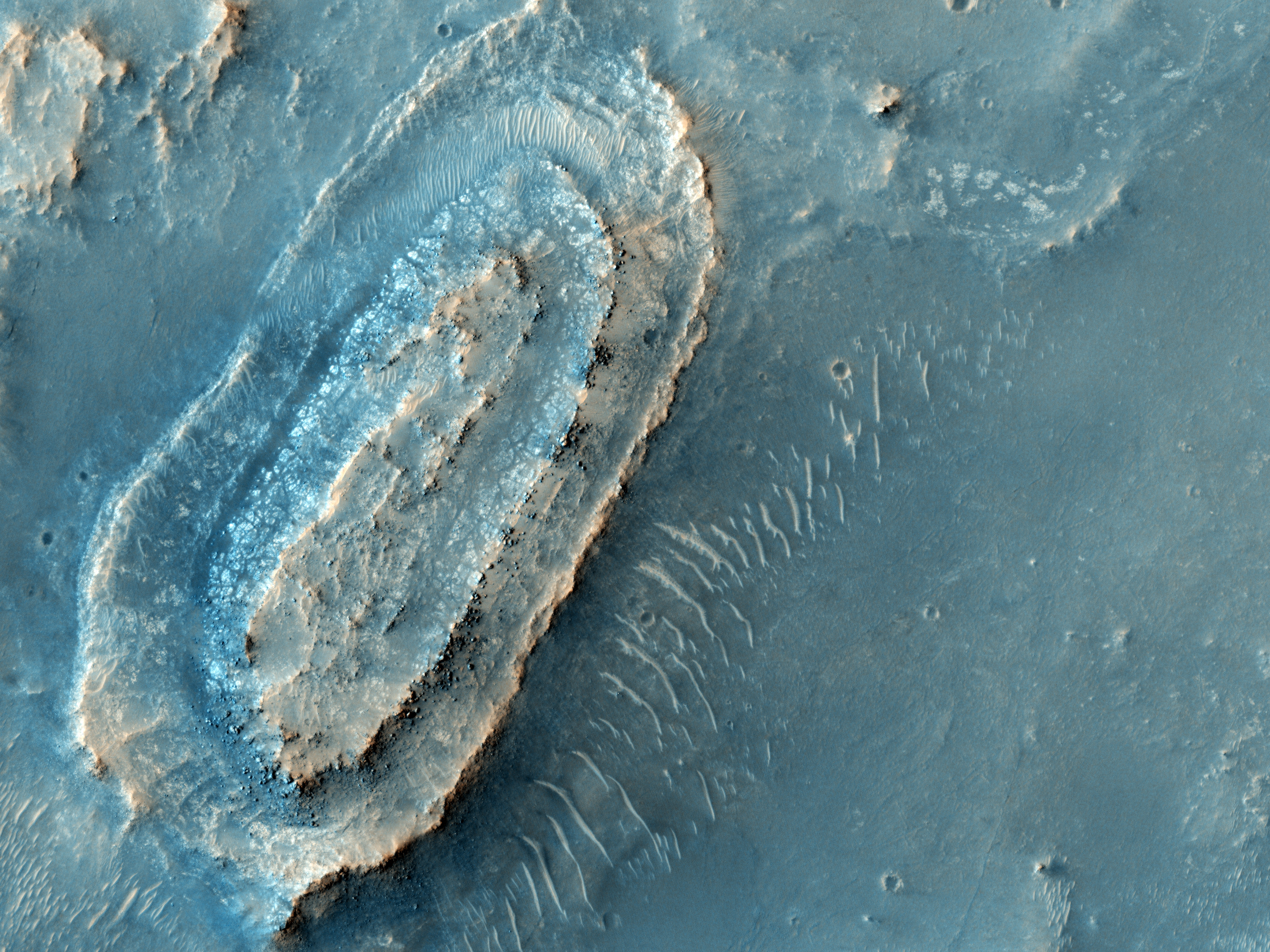Landing Sites for 2020 Mars Rover: NASA Weighs 3 Options

NASA has selected three potential landing sites for the upcoming Mars 2020 rover: an ancient lake, a past volcanic hotbed and an early hot-spring site.
Scientists chose the final three candidates at a workshop last week (Feb. 8-10) in Monrovia, California, from eight sites chosen in 2015 (out of a pool of around 30, NASA officials said in a statement).
NASA began its final design and construction phase for Mars 2020 in July of 2016. The rover is intended to hunt for signs of ancient life on the Red Planet after touching down in February 2021, exploring for at least two years, mission team members have said. [NASA's Mars Rover 2020 Mission in Pictures]

The Jezero crater stood out as a forerunner site in 2015, and is among the three remaining potential sites. It's an ancient lakebed where microbial life could have developed, NASA officials said in the statement. The river-delta structure suggests that water filled and drained from the crater at least twice, and NASA's Mars Reconnaissance Orbiter has identified minerals that have been chemically altered by water.

Starting in 2004, the Mars exploration rover Spirit explored Gusev crater, which stretches larger than the state of Connecticut. Spirit it discovered evidence of past mineral hot springs at one particular location, according to the statement. That spot, Columbia Hills, is the only place where Spirit found signs of water in the enormous crater, and it is another of NASA's top picks for Mars 2020. (Later data analysis suggested Gusev may have hosted a shallow lake.)

An ancient volcano warmed Northeast Syrtis, and this heat could have led to hot springs and melting ice, making a welcome haven for past microbial life. The edge of the Syrtis Major volcanos is Mars 2020's third potential site. The spot exposes 4-billion-year-old bedrock, as well as many minerals altered by encounters with water during Mars' early history.
To choose from among the three top sites, which all have evidence of liquid water in their history, scientists will determine where the rover could land and travel safely. They will also look at which location has a variety of rocks and soils to analyze, the best conditions to have supported past life, and rock types that would retain evidence of past life, among other considerations.
Get the Space.com Newsletter
Breaking space news, the latest updates on rocket launches, skywatching events and more!
The final determination should come after a fourth workshop, likely in 2018, researchers said at the 2015 meeting — or perhaps at a fifth, in 2019, if necessary. The craft itself should launch in July 2020 on an Atlas V rocket from Cape Canaveral, Florida.
Email Sarah Lewin at slewin@space.com or follow her @SarahExplains. Follow us @Spacedotcom, Facebook and Google+. Original article on Space.com.
Join our Space Forums to keep talking space on the latest missions, night sky and more! And if you have a news tip, correction or comment, let us know at: community@space.com.

Sarah Lewin started writing for Space.com in June of 2015 as a Staff Writer and became Associate Editor in 2019 . Her work has been featured by Scientific American, IEEE Spectrum, Quanta Magazine, Wired, The Scientist, Science Friday and WGBH's Inside NOVA. Sarah has an MA from NYU's Science, Health and Environmental Reporting Program and an AB in mathematics from Brown University. When not writing, reading or thinking about space, Sarah enjoys musical theatre and mathematical papercraft. She is currently Assistant News Editor at Scientific American. You can follow her on Twitter @SarahExplains.









